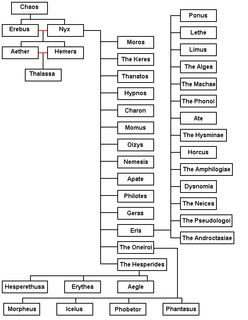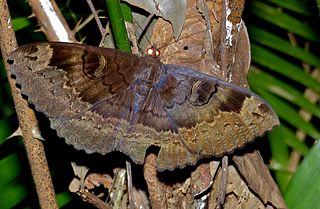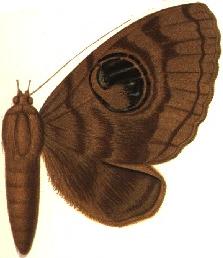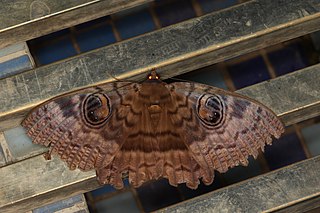
In Greek mythology, Erebus, also Erebos, was often conceived as a primordial deity, representing the personification of darkness; for instance, Hesiod's Theogony identifies him as one of the first five beings in existence, born of Chaos.

Mount Erebus is the second-highest volcano in Antarctica and the southernmost active volcano on Earth. It is the sixth-highest ultra mountain on the continent. With a summit elevation of 3,794 metres (12,448 ft), it is located in the Ross Dependency on Ross Island, which is also home to three inactive volcanoes: Mount Terror, Mount Bird, and Mount Terra Nova.

HMS Erebus was a Hecla-class bomb vessel constructed by the Royal Navy in Pembroke dockyard, Wales, in 1826. The vessel was the second in the Royal Navy named after Erebus, the dark region of Hades in Greek mythology.

Erebus is a crater lying situated within the Margaritifer Sinus quadrangle (MC-19) region of the planet Mars, this extraterrestrial geological feature was visited by the Opportunity rover on the way to the much larger crater Victoria. It is named after the polar exploration vessel HMS Erebus which was used by James Clark Ross in 1841 to discover the Great Ice Barrier, now known as the Ross Ice Shelf. The rover was in the immediate vicinity of the crater from approximately sol 550 to 750.

HMS Terror was a specialized warship and a newly developed bomb vessel constructed for the Royal Navy in 1813. She participated in several battles of the War of 1812, including the Battle of Baltimore with the bombardment of Fort McHenry. She was converted into a polar exploration ship two decades later, and participated in George Back's Arctic expedition of 1836–1837, the Ross expedition of 1839 to 1843, and Sir John Franklin's ill-fated attempt to force the Northwest Passage in 1845, during which she was lost with all hands along with HMS Erebus.
Erebus is the Greek god of darkness as well as a region of the Greek underworld.

Erebus is a genus of moths in the family Erebidae.

Erebus macrops is a species of moth of the family Erebidae first described by Carl Linnaeus in 1768. It is found in the subtropical regions of Africa and Asia. The wingspan is about 12 cm, making it exceptionally large for an Erebidae species. The larvae feed on Acacia and Entada species.

Erebus caprimulgus is a moth of the family Erebidae. It is found from the Oriental Region of India, Sri Lanka, Myanmar to Peninsular Malaysia, Sumatra and Borneo.

Erebus nyctaculis is a moth of the family Erebidae. It is found from Mindanao and Indonesia south to northern Australia.

Erebus macfarlanei is a moth of the family Erebidae. It is found in Queensland and from the Southern Moluccas and Indonesia to the Solomon Islands.

Erebus crepuscularis is a moth of the family Erebidae first described by Carl Linnaeus in his 1758 10th edition of Systema Naturae. It is found in Indonesia, New Guinea, Taiwan and the Australian states of Queensland and New South Wales.

Erebus variegata is a moth of the family Erebidae. It is found on the Solomon Islands and New Guinea.

Erebus intermedia is a moth of the family Erebidae. It is found in Asia, including the Bismarck Archipelago and Sulawesi.

Erebus Glacier is a glacier draining the lower southern slopes of Mount Erebus, Ross Island, Antarctica. It flows west to Erebus Bay where it forms the floating Erebus Glacier Tongue. It was named in association with Mount Erebus by the British National Antarctic Expedition, 1901–04, under Robert Falcon Scott.

Erebus ephesperis is a moth of the family Erebidae first described by Jacob Hübner in 1827. It is found in Asia, including India, Japan, the Korean Peninsula, China, Singapore and Borneo.

Erebus walkeri is a moth of the family Erebidae. It is found in Angola, the Comoros, the Democratic Republic of Congo, Ghana, Kenya, La Réunion, Madagascar, Malawi, Mauritius, Mozambique, Nigeria, Rwanda, the Seychelles, South Africa (KwaZulu-Natal), São Tomé & Principe, Tanzania, Gambia, Uganda, Zambia and Zimbabwe.

Erebus hieroglyphica is a moth of the family Erebidae. It is found from the Oriental tropical countries such as India, Pakistan, Sri Lanka, Bangladesh, Japan, China, Taiwan, Cambodia, Laos, Myanmar, Thailand, Vietnam, Indonesia, Philippines, Malaysia, Singapore, and Korea. The habitat consist of lowland forests.
Erebus albicinctus is a moth of the family Erebidae. It is found in Taiwan, China (Shaanxi), India, Nepal, Bangladesh, Thailand and Indonesia (Sumatra).










